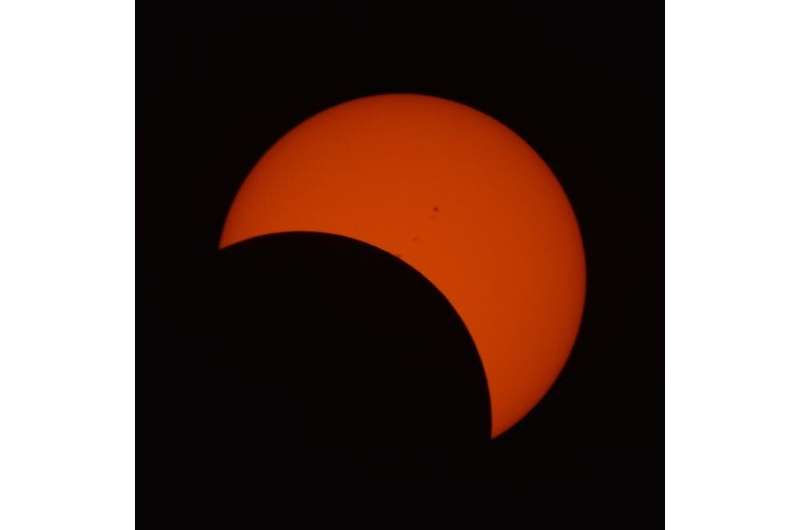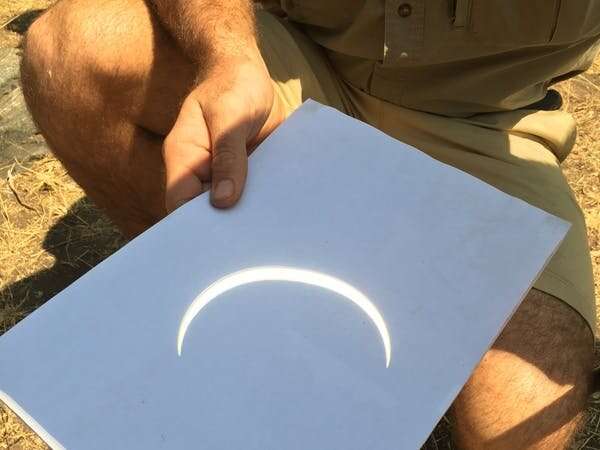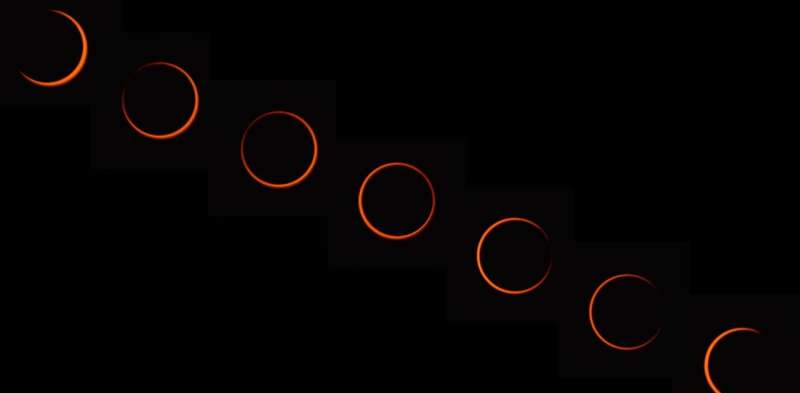This was my tenth solar eclipse trip, having previously traveled to witness eight total eclipses (one of which I missed because of clouds) and one annular eclipse. This week, there's no traveling necessary—an eclipse will be visible from where I live. But I'm not expecting this one to be dramatic, and you shouldn't either.
Seeing a solar eclipse is a rare experience and one that drives eclipse chasers like me. Witnessing day turn to night, feeling the temperature plummet, watching birds go to roost, perhaps seeing mysterious shadow bands, feeling your hairs stand on end and the adrenaline pump through your veins for those precious few minutes is always, always worth it.
A total solar eclipse occurs when the Moon completely obscures the Sun. This happens because the Moon is about 400 times smaller than the Sun, but also 400 times closer, giving them the same apparent size in the sky.

Annular eclipse
Because the Moon's orbit is not perfectly circular, it can sometimes appear slightly smaller than the Sun. When this alignment happens, we witness an annular eclipse—a "ring of fire" appears around the Moon because a halo of the solar disk is still visible.
In an annular eclipse, the temperature barely changes, the shadows behave as you'd expect and the corona remains hidden behind the glow of sunlight. On Thursday, June 10, an annular eclipse will be visible from parts of north-east Canada, Greenland and Siberia. In the UK and Ireland, we'll see a partial solar eclipse. About 35% of the Sun will be blocked out by the moon as viewed from Northern Ireland and Scotland, decreasing to about 20% in south-east England.
The event begins around 10am UK time and ends around 12:30pm, depending on location. Most people will be oblivious to what's going on above their heads, even with clear skies.
To see the event at all, you will need specially approved solar eclipse glasses that reduce sunlight to safe levels. Looking directly at the Sun during anything other than totality—when the face of the Sun is completely obscured—can cause serious and irreparable eye damage.
But there are other safe, indirect ways to experience the event. Using a pinhole camera (two sheets of paper or card with a small hole punched in one of them) will allow you to project an image of the Sun onto the ground or a wall.
Similarly, anything with a tiny hole that can be used to create a shadow will do—a kitchen colander, the holes in a cracker, the spaces between the leaves in a tree, even cracks through gaps in your fingers can work with some patience.

Eclipse chasing
While Thursday's event may prove underwhelming, even to those who see it under the best conditions, I'd urge anyone with a sense of adventure to attempt to witness a total solar eclipse at some point in their lives.
The next one will be on December 4 this year. Unfortunately, it will only be visible from Antarctica. Tours start from an eye-watering £15,000—even I might have to give that one a miss.
I plan to travel to Indonesia in 2023 to see totality during a hybrid eclipse—total during part of the day, annular during the rest. The US, Mexico and Canada will experience another total solar eclipse in 2024, just seven years after one in 2017 that was only visible from the US, and was deemed to be the most-watched event in human history.
Spain will host a total solar eclipse in 2026 that will again appear as a partial eclipse from the UK. But as early 20th-century eclipse chaser Rebecca Joslin said: "Now eclipses are elusive and provoking things … visiting the same locality only once in centuries. Consequently, it will not do to sit down quietly at home and wait for one to come, but a person must be up and doing and on the chase."
Explore further
This article is republished from The Conversation under a Creative Commons license. Read the original article.![]()



